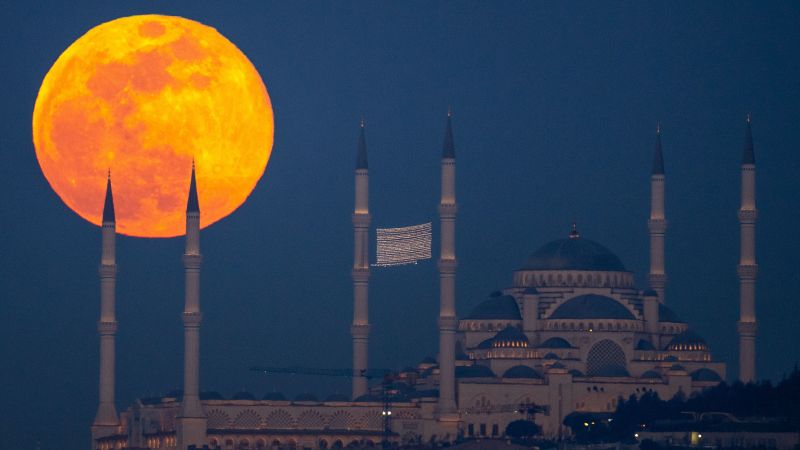In recent astronomical news, a fascinating celestial event is set to take place that many enthusiasts and casual stargazers alike will want to witness. February’s full snow moon will grace the night sky this week, peaking at 8:53 a.m. ET on Wednesday. According to NASA, the moon will appear in its full glory from Wednesday morning and remain fully illuminated through Thursday evening. The full snow moon derives its name from the heavy snowfall typically associated with the month of February, as noted by The Old Farmer’s Almanac. This fascinating origin reflects cultural significance, as various Indigenous tribes also have unique names for this lunar phase. For instance, the Comanche refer to it as the “sleet moon,” while the Lakota tribe calls it “when trees crack because of cold,” and the Wishram people refer to it as “shoulder to shoulder around the fire moon,” showcasing diverse interpretations of the winter season.
While you are preparing to feast your eyes on the mesmerizing moon, there is also the opportunity to enjoy a parade of planets in the night sky. As noted by NASA, four planets are visible to the naked eye at twilight through mid-February. Although some may be quick to label this phenomenon as a rare planetary alignment, it’s essential to understand that seeing a few planets at sunset is relatively common. However, the simultaneous visibility of four or five bright planets is indeed a less frequent sighting. The planets orbit the sun along a relatively flat plane called the ecliptic, which is why they appear aligned along a particular line in the sky, offering a captivating visual display.
Among the planets that will be visible, Venus shines bright in the western sky, while Mars radiates an amber orange hue high in the eastern expanse. Jupiter puts on a dazzling display directly overhead, and Saturn can be spotted faintly low in the western sky just after sunset. Additionally, for those watching the horizon closely, Mercury will make an appearance above the skyline late in February, standing out brilliantly as dusk approaches.
Looking ahead, there are plenty of astronomical events to anticipate throughout the year, with full moons marking each month’s journey. For example, the Worm Moon will occur on March 14, followed by the Pink Moon on April 12. May will welcome the Flower Moon on May 12, and as the seasons progress, the Strawberry Moon will appear on June 11, the Buck Moon on July 10, and further on, the Sturgeon Moon on August 9. Mark your calendars for the Corn Moon on September 7, the Harvest Moon on October 6, the Beaver Moon on November 5, and finally, the Cold Moon on December 4. Each monthly full moon offers a divergent experience, steeped in history and tradition.
On a broader scale, future eclipses are on the horizon, altering the typical appearance of the sun and moon. In 2025, there will be two partial solar eclipses, which occur when the moon partially obscures the solar sphere. This essentially creates a crescent shape where it appears as though the moon is taking a bite out of the sun. The first partial eclipse will unfold on March 29, visible across parts of Europe, Asia, Africa, and North and South America, followed by another on September 21, observable from areas including Australia and Antarctica.
Moreover, this year also features two total lunar eclipses during the full moons of March and September. When Earth shades the moon in its shadow, it can create an exquisite scene where the moon appears to take on a reddish hue, earning the nickname “blood moon.” The first occurrence will take place between March 13 and March 14, where it will be visible across various continents, followed by the second in September, visible from regions including Europe, Asia, and parts of North America.
In addition to moon phases and eclipses, meteor showers provide another spectacle. The American Meteor Society has outlined peak dates throughout the year, commencing with the Lyrids on April 21-22, and encompassing the Perseids on August 12-13, all the way through to the Ursids on December 21-22. These celestial phenomena enrich our understanding of the universe and the dynamic forces at play within it. To keep track of these dates and the best vantage points for viewing, sites like Time and Date are excellent resources for stargazers and science enthusiasts alike.



